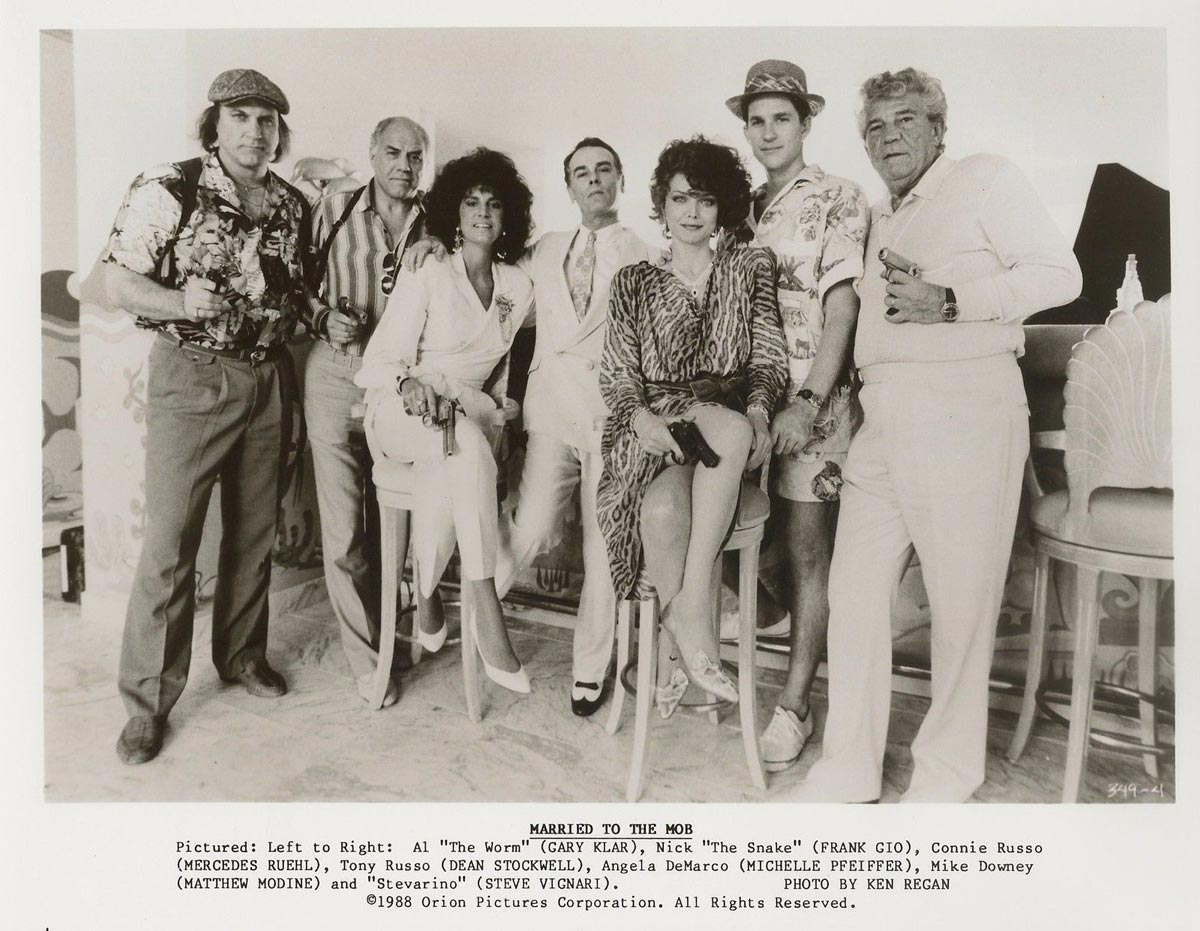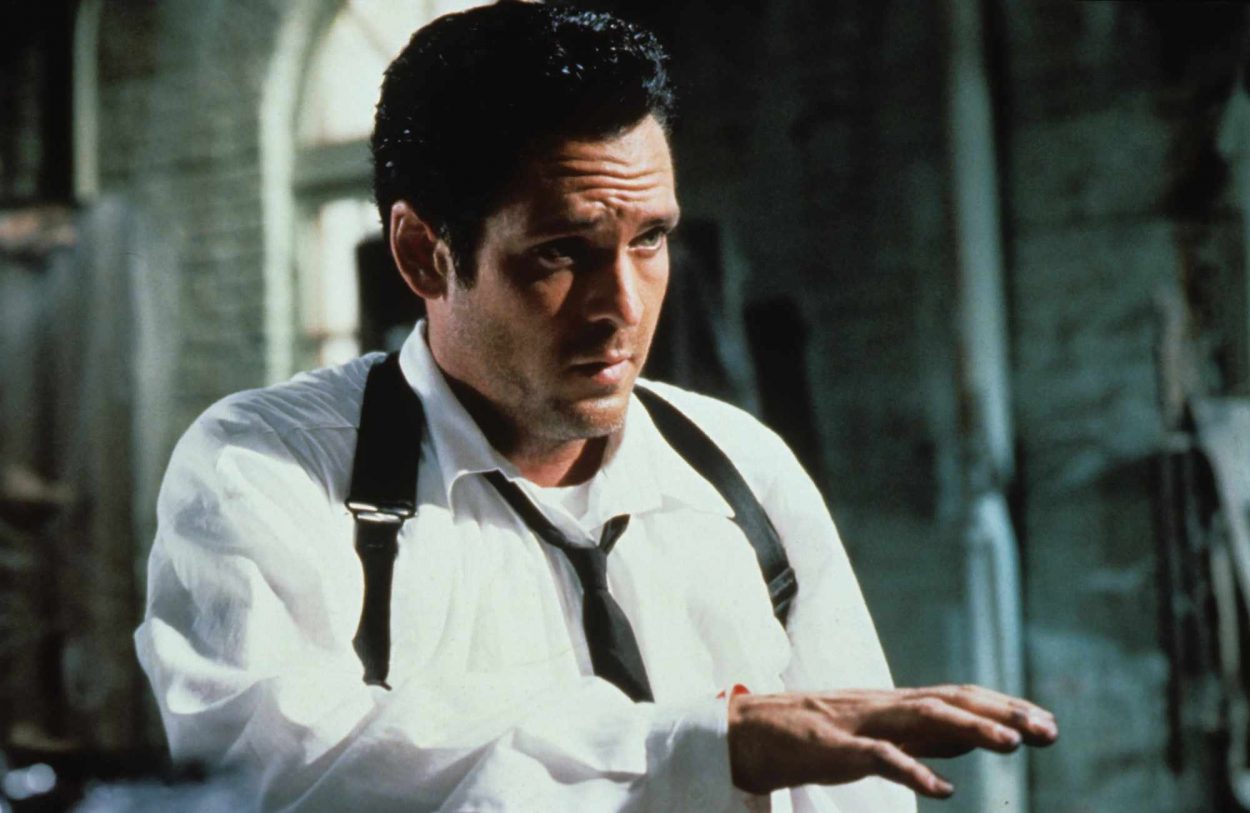Married to the Mob (Jonathan Demme, 1988) is the S’mores of mafia comedies: created from everything delicious and best when consumed with people who enjoy wild adventures. This film is like a drug: it will make you high as a kite, flush with the kind of endorphins that only a Jonathan Demme film can produce. Upon the opening credits, it is clear that this landscape is entirely different than most films. It is aurally dynamic, visually bold and entirely inviting. This is what you will get with Married to the Mob – I hope you’re ready.

The only bad thing about this film? Married to the Mob ended up being Jonathan Demme’s final voyage into the fantastic land of bright visuals, Daliesque narratives and ’80s vitality that he had made his cinematic calling card. The Demme universe, a cosmos expanding with kitsch, cool and pop culture, explored previously in works like Something Wild (1986) and Stop Making Sense (1984), was singular in its ability to balance noir /criminal themes, gut-busting comedy and a through-line of surrealism. These films displayed Demme’s unique and wacky creativity, and pointed directly to his beginnings as a Roger Corman-initiate. The films’ anarchism and utter disregard for normalcy reflected Demme’s early experiences in the Corman contingent and easily allow us to see the connections between films like those already mentioned and earlier works like Crazy Mama (1975).
Married to the Mob was Demme’s grand finale of fun before he began developing a fascination with themes like psychological darkness or deep humanity as shown in films like Silence of the Lambs (1991) and Philadelphia (1993). Demme’s oeuvre is wonderful and embraceable at any given point but there is something innately glorious about the work he made in the ‘80s. These films glow, like a nitrate print, when watched. You can’t help but be taken by them.
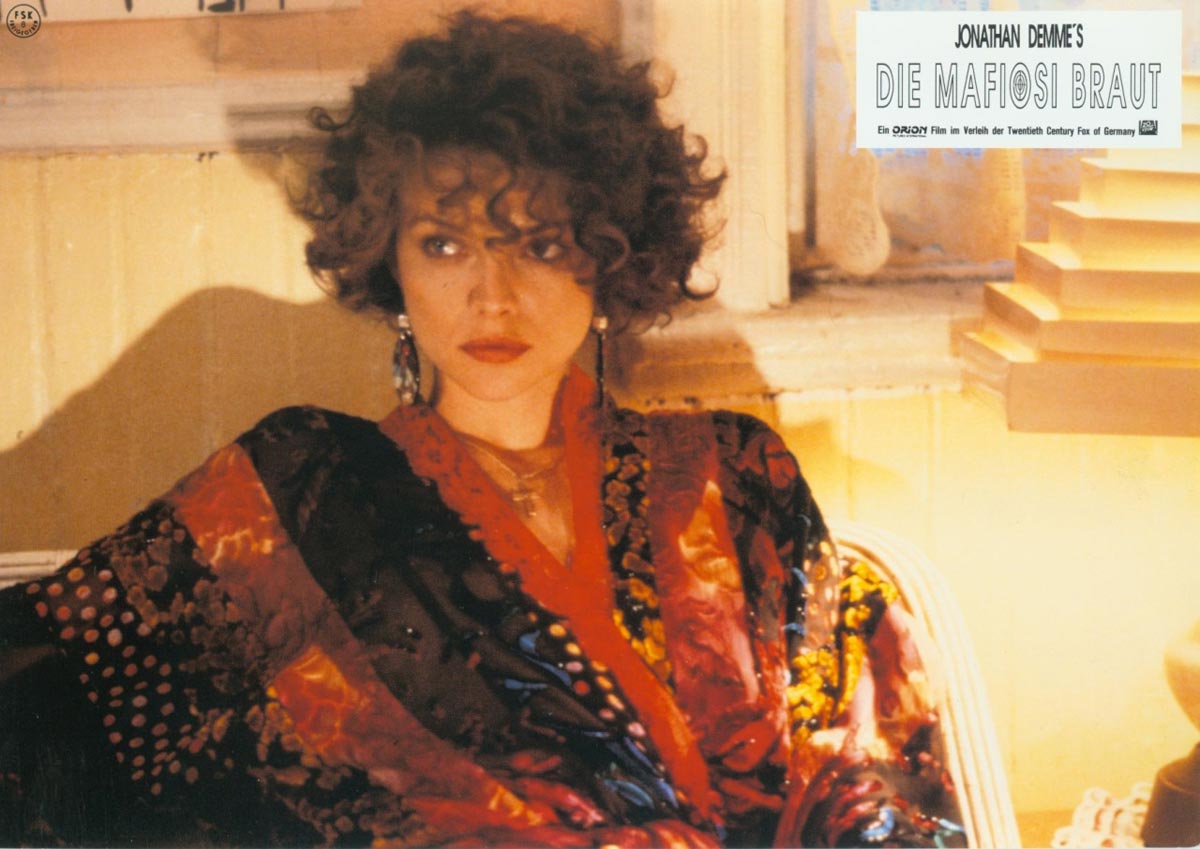
From DePalma to Demme, actress Michelle Pfeiffer has rocked the role of the mobster wife. But the role of Elvira Hancock in Scarface (Brian DePalma, 1983) differs quite a bit from that of Mrs. Angela DeMarco in Married to the Mob (1988). While DePalma designed his female character to fit the mold of the stereotypical mob companion (corrupt, unpleasant, deferring everything to her Mafioso man), the woman in Demme’s mob parody flips that stereotype in order to create a figure that is everything that the standard Mob Ladywife is not. Angela DeMarco, from the get go, is bored with money, doesn’t want to play cards with the other mobsters’ wives, and is livid when she finds her son is gambling with the other kids in the backyard. She believes (correctly) that living within mafia confines is setting a horrible example for her child, especially when her no-good philanderer husband, “Cucumber” Frank DeMarco (Alec Baldwin) can’t find his gun and their son easily locates it in a kitchen drawer. “It wasn’t loaded,” Frank shrugs. Angela’s eyes get even wider and her mouth drops. How can she live like this?
One of the more wonderful components of Married to the Mob is that while it may be a comedy predicated upon stereotypes and boilerplate mafia representations, its depiction of the female protagonist is set firmly in a feminist narrative. This narrative wreaks havoc with Demme’s perfectly sculptured mafia archetypes and leads to one of the most delightful and charming films produced in the 80s. While it ended up as a cable staple later on and many have tossed the film off as a “lesser Demme,” Married to the Mob is smart, stocked to the brim with “OMG! THAT GUY? WOAH!” moments, and is a great example of genre parody done by a master filmmaker.
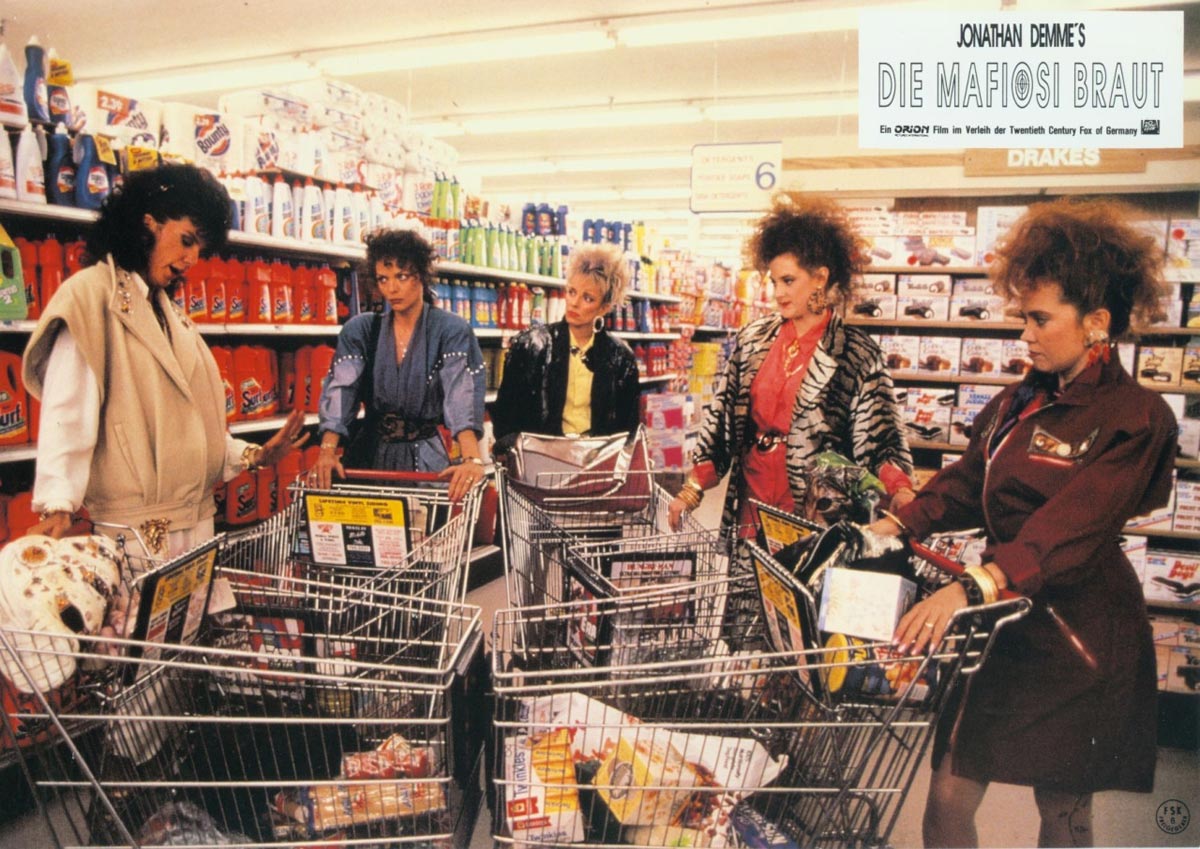
Married to the Mob mirrors films like Desperately Seeking Susan (Susan Seidelman, 1985) in tone, tapping into the theme of women looking to achieve more in their lives than white picket fences and TV dinners. Films throughout the 1980s operated on this thesis, depicting unhappily married women determined to break free from the unsatisfying lives in the suburbs that were sucking their souls dry. Married to the Mob takes this a step further.
Angela DeMarco (Michelle Pfeiffer), married to (cool as a) “Cucumber” Frank DeMarco (Alec Baldwin), is not like other mob wives. She cares and wants the best for her kid. She abhors the way their family lives and what it lives on (embezzled money, stolen furniture, dishonesty). Angela has no real friends as she rejects anything having to do with her husband’s life, especially the mob wives, played impeccably by Mercedes Ruehl, Joan Cusack (and a few others). When Frank gets iced, Angela takes the opportunity to get the hell out of Dodge. Unfortunately, her loathsome past catches up with her in the form of mob boss, Tony ‘The Tiger’ Russo (Dean Stockwell) as well as handsome (but awkward) FBI agent Mike Downey (Matthew Modine), both of whom have the wrong idea about her in slightly differing ways. As the film continues, we watch as the rest of the New York City male population treats Angela poorly and denies her the respect she deserves. From sexual harassment to flat-out blackmail, Angela suffers non-stop misogyny at the hands of almost every man she meets. Mind you, those men happen to be the hilarious Tracey Walter and noted character actor Trey Wilson (both Demme “regulars”). But Angela refuses to give up: she does not suffer fools. She makes it past these obstacles and is able to continue her journey. And we are able to enjoy watching these men fall by the wayside.
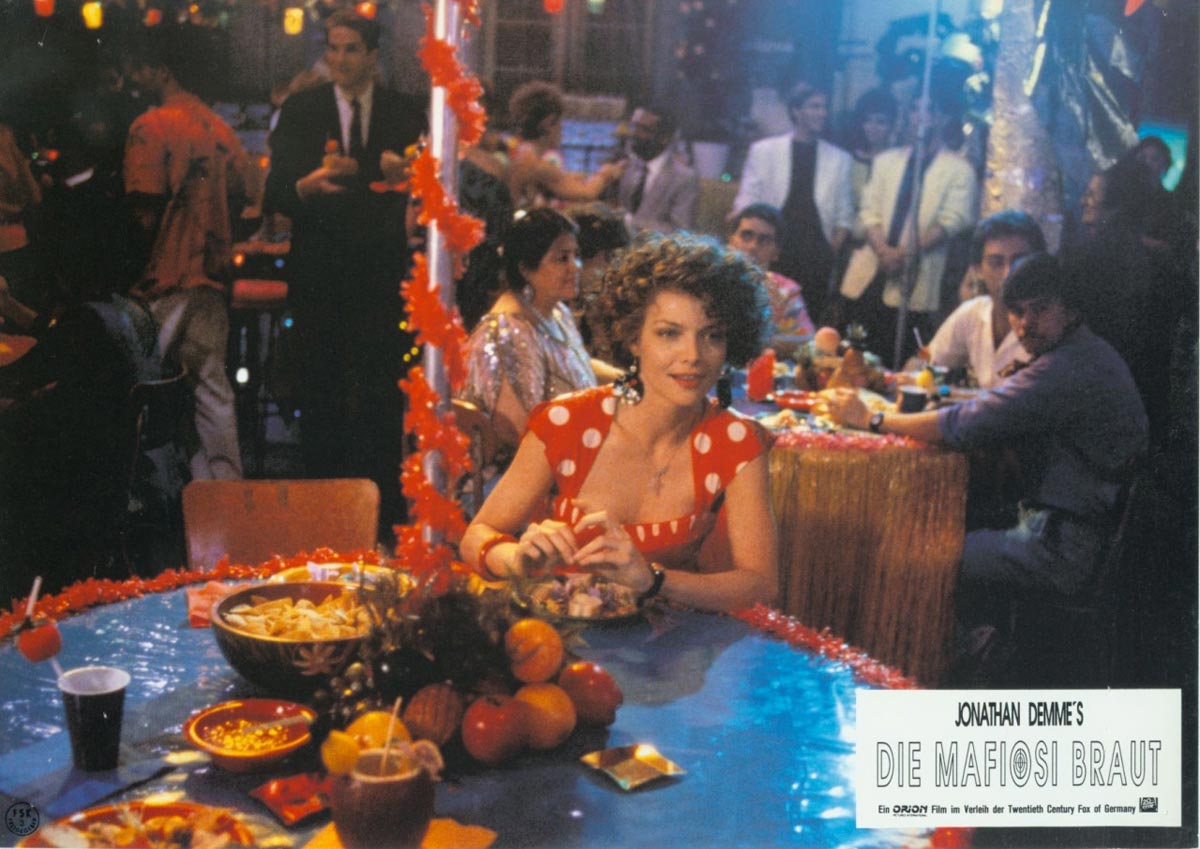
Married to the Mob is a mixed genre film. It is a Woman’s Film as it follows the trials and tribulations of Angela DeMarco, victimized by the mob culture that she has fallen into and now struggles to escape from. Like Women’s Films of the past, Angela works her ass off to support herself and her son, and is continually put in precarious situations due to her “shady” past. But, like most Women’s Films, Demme demonstrates in this work the courage and fortitude that it takes to brave a landscape like this. It ain’t easy. As strong as the reference to that genre is, the film maintains its core as a hardcore spoof of the mafia and gangster culture. We shake with laughter at the various mobster-related cameos by people like Chris Isaak or Buster Poindexter. Even though names like Vinnie “The Slug” (Frank Ferrara), Nick “The Snake” (Frank Gio) and Al “The Worm” (Gary Klar) may seem like basic monikers, in Married to the Mob sometimes the most obvious joke is the funniest. These are just slimy, dirty guys!
This film is insanely enjoyable from beginning credits to the very end where, under the final credit sequence, we are given a special vision of footage that was not included in the main narrative. In a world that is not predicated on DVD/Blu-rays, director’s cuts and extended scenes, this final credits sequence is highly unique. Demme shot an entire scene with Joe Spinell for Married that never made it to the final cut but he desperately wanted the audience to see it so….BOOM. Just put it in at the end. Make sure people see that Spinell was, indeed, part of the picture. There’s a lovely extended scene with Modine and Pfeiffer on the steps of a building. Never happens in the actual narrative. But you will see it as the credits are rolling! The character Chris Isaak plays? Apparently you get a feel for his creepy back-story…but you have to watch those credits! Pay attention or you’ll miss it. The format of 35mm film and its shooting economy are platformed in this credit sequence. These added moments underscore how Demme developed a sense of the film narrative, physical film limitations and editing techniques. As much as he may have wanted to use those scenes, they did not belong within the beginning to end of the Married story. But as a post-script? OH HELL YEAH! He could take that beloved “excess” footage and use it to cap off the film, no problem! Audiences could and would remember these extra scenes and it would end up being part of their Married to the Mob experience, if not an aspect of the actual plotline.
Come to the New Beverly and see this film April 19 & 20. Enjoy yourselves. Make sure you stay for the credits. If you don’t, you’ll miss something great.
